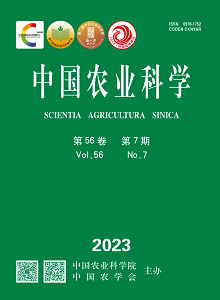【Background】 Meridian theory is the cornerstone of Traditional Chinese Medicine (TCM), and acupoints are the key sites on the meridian, which are the implementation location of the acupuncture. However, there are different opinions on the structural basis and morphological composition of acupoints, which cannot be scientifically clarified. As a newly found type of interstitial cells, Telocytes (TCs) were suggested to be the potential essence cells of the meridian by morphological study recently, but the characteristics and distribution of TCs at acupoints need to be further elucidated. 【Objective】 This study aimed to analyze the structural differences between acupoints and non-acupoints, and to explore the morphological characteristics of TCs at acupoints. The structural relations between TCs and its surrounding components were also analyzed, so as to provide theoretical support for the study of the cellular mechanism of TCM acupuncture treatment. 【Method】 The skin tissues of Baihui (Du20), Quchi (LI11), Sanyinjiao (Sp6), Danzhong (Ren17), Chengjiang (Ren24), Erjian (EP4) and non-acupoints on the back and abdomen were collected from five adult healthy Hu sheep. TCs and Tps (telopodes) were stained by specific markers CD34 and Vimentin, the mast cells were labeled by TPS, and nerves were identified by PGP9.5. Extracellular vesicles were marked by TSG101. The structure and fine composition of skin acupoints and non-acupoints were analyzed by H.E and immunohistochemical techniques (IHC), and the morphological quantitative analysis of the data was carried out by using ImageJ and Image-Pro Plus statistical software. The distribution differences of TCs and its related structures at acupoints and non-acupoints were analyzed. On this basis, the morphological characteristics and stereoscopic structure of TCs were observed by transmission electron microscope (TEM), scanning electron microscope (SEM) and immunofluorescence (IF) double labeling technique, and the morphological relationship between TCs and these structures was further analyzed, thus determining the ultramorphology and material basis of acupoints. 【Result】 There were such structures as hair follicles, sebaceous glands, sweat glands and arrector pili muscle, as well as nerves, blood vessels, mast cells, collagen fiber bundles at the acupoints and non-acupoints. However, the number of nerves, blood vessels and mast cells distribution at acupoints was significantly more than that at non-acupoints (P<0.05). More importantly, TCs with slender tubular processes (telopodes, Tps) were distributed in the skins, and the distribution of TCs at the acupoints was significantly different from that of non-acupoints (P<0.05). TCs could be used as the integrator of acupoints stroma. There were extensive relationships between TCs themselves or TCs and surrounding morphological structures (including gap junctions and extracellular vesicles, etc.), which could develop a structural network system. At the ultramicro level, it was observed that the Tps was a typical beaded appearance, which was composed of alternating arrangement of the inflated part (podom, Pd) and the slender stenotic part (podomer, P). The well-developed mitochondria in the cytoplasm of podom, the cellular connection between Tps and Tps, and a large number of extracellular vesicles on or around TCs (significantly more than non-acupoints (P<0.05)) ensured the core role of TCs in the structure of acupoints. Moreover, the structural connection between TCs and epidermal derivatives also verified the relationship between acupoints and epidermal derivatives in the classic book Huangdi Neijing (The Yellow Emperor’s Canon of Internal Medicine) at the cellular level. 【Conclusion】 Structural compositions at the acupoints and non-acupoints were basically the same, while the number of TCs and Tps, nerves, blood vessels, mast cells, extracellular vesicles at acupoints was significantly more than that at non-acupoints; TCs and Tps had the functional structures of connecting and integrating various morphological components, which might be mediators or integrators of different systems at the acupoints. The cell connections among TCs, developed mitochondria and extracellular vesicles had the structural basis for cell communication and energy generation, which corresponds to the “Qi-Xue” in TCM.









